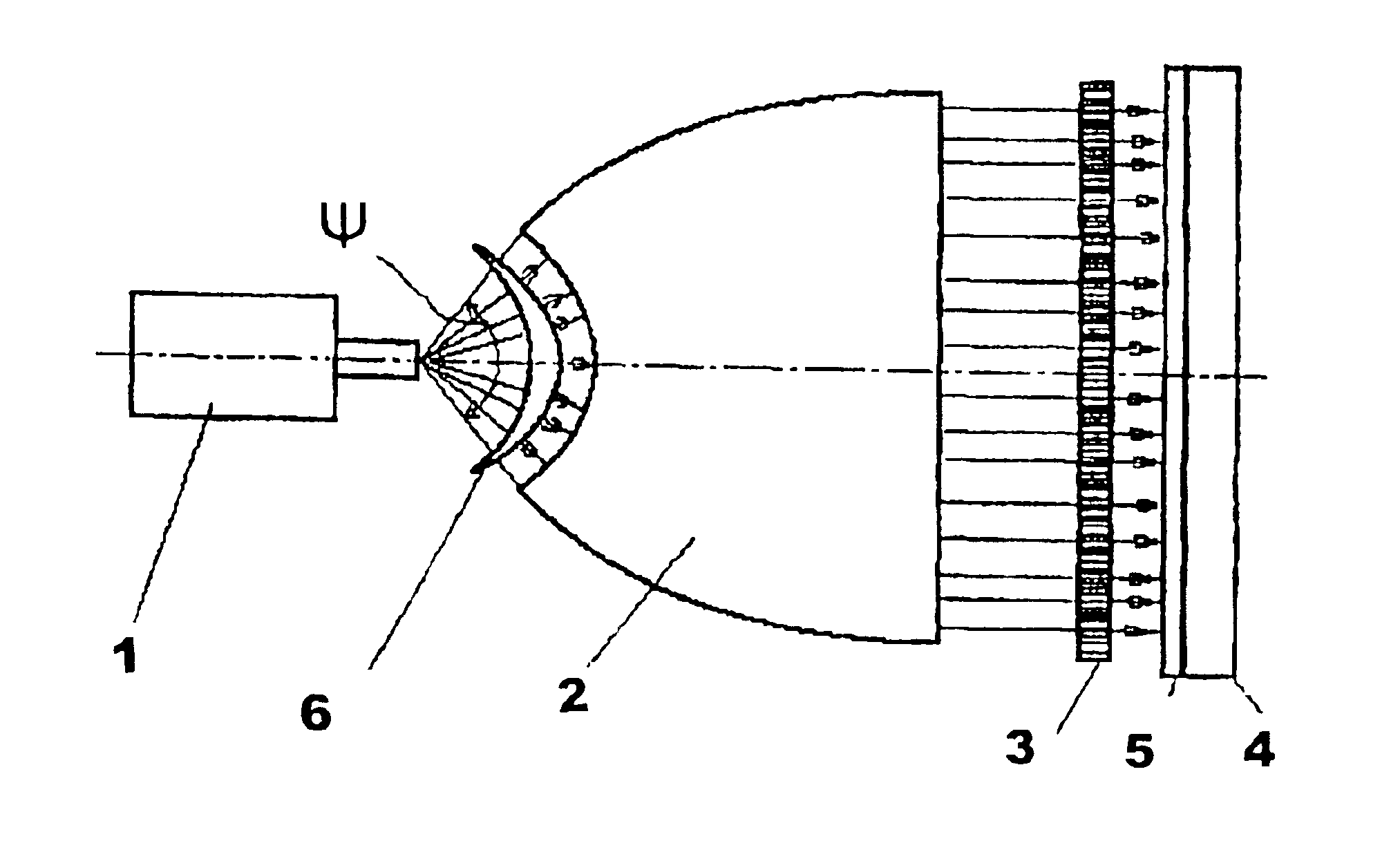Device for x-ray lithography
a technology of x-ray lithography and x-ray light, which is applied in the direction of instruments, photomechanical equipment, and handling using diaphragms/collimeters, etc., can solve the problems of falling on the mask, destroying the mask further, and not being able to meet the radiation intensity uniformly
- Summary
- Abstract
- Description
- Claims
- Application Information
AI Technical Summary
Problems solved by technology
Method used
Image
Examples
Embodiment Construction
An X-ray lithography device includes a source of divergent soft X-rays 1, wherein an output aperture is placed in the focus of a half lens 2. A mask 3 is located on the side of an output face of half lens 2. A plane of mask 3 is parallel to the output face of half lens 2, i.e. the mask 3 is perpendicular to a longitudinal axis of the half lens 2 and to an axial line of an emergent quasi-parallel radiation beam formed by the half lens 2.
A substrate 4 is placed with a layer of resist 5 applied on it and is located after the mask 3. The substrate 4 should be located so that a plane of resist 5 is parallel to a plane of mask 3, and it is spaced from the mask 3 at a minimum distance.
An absorbing filter 6 is placed between X-ray source 1 and the input face of half lens 2. The absorbing filter 6 represents a product made of material, absorbing an X-rays, as an axi-symmetric body, being relative to an axis combined with a longitudinal axis of a half lens. A thickness of the absorbing filter...
PUM
| Property | Measurement | Unit |
|---|---|---|
| radiation energy | aaaaa | aaaaa |
| atomic number | aaaaa | aaaaa |
| capture angle | aaaaa | aaaaa |
Abstract
Description
Claims
Application Information
 Login to View More
Login to View More - R&D
- Intellectual Property
- Life Sciences
- Materials
- Tech Scout
- Unparalleled Data Quality
- Higher Quality Content
- 60% Fewer Hallucinations
Browse by: Latest US Patents, China's latest patents, Technical Efficacy Thesaurus, Application Domain, Technology Topic, Popular Technical Reports.
© 2025 PatSnap. All rights reserved.Legal|Privacy policy|Modern Slavery Act Transparency Statement|Sitemap|About US| Contact US: help@patsnap.com


